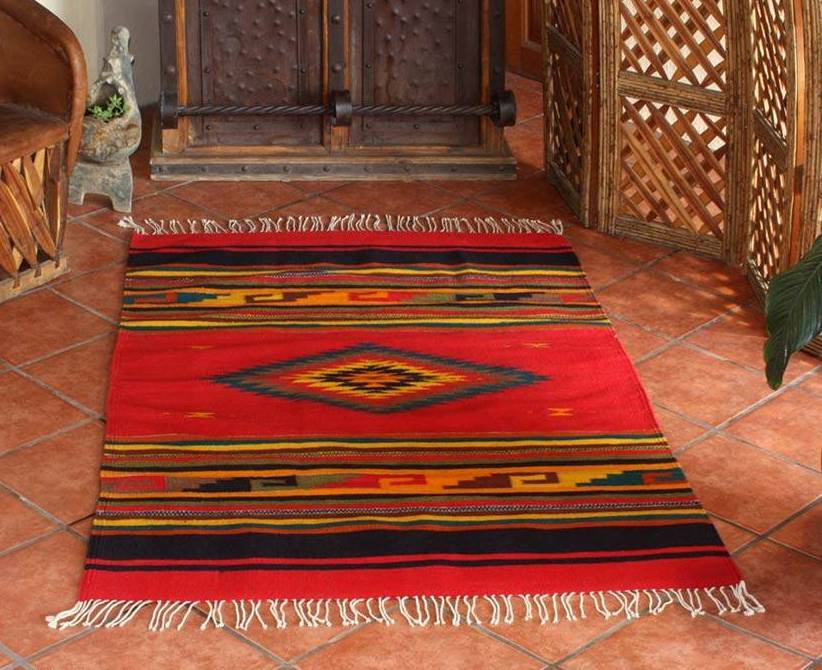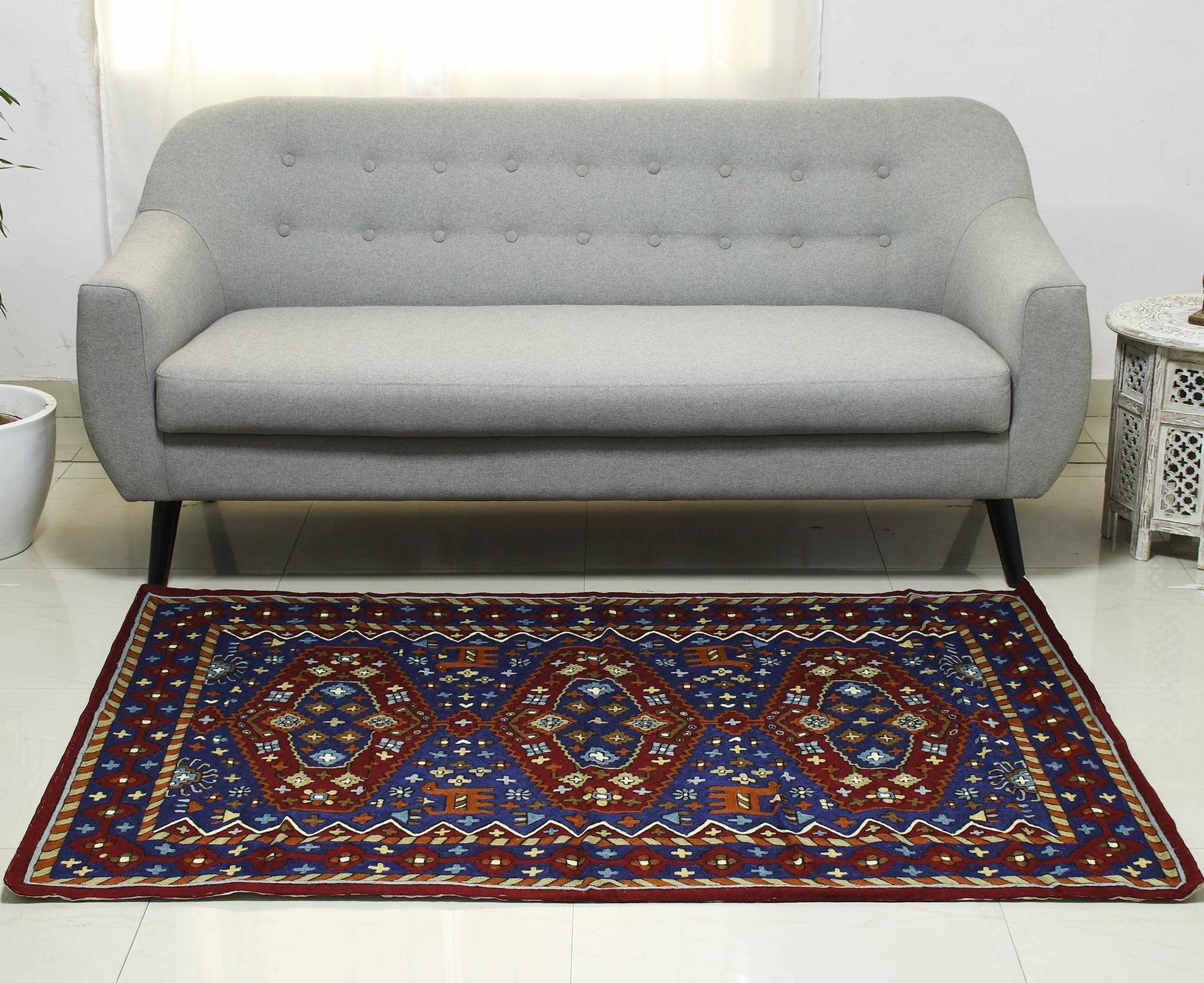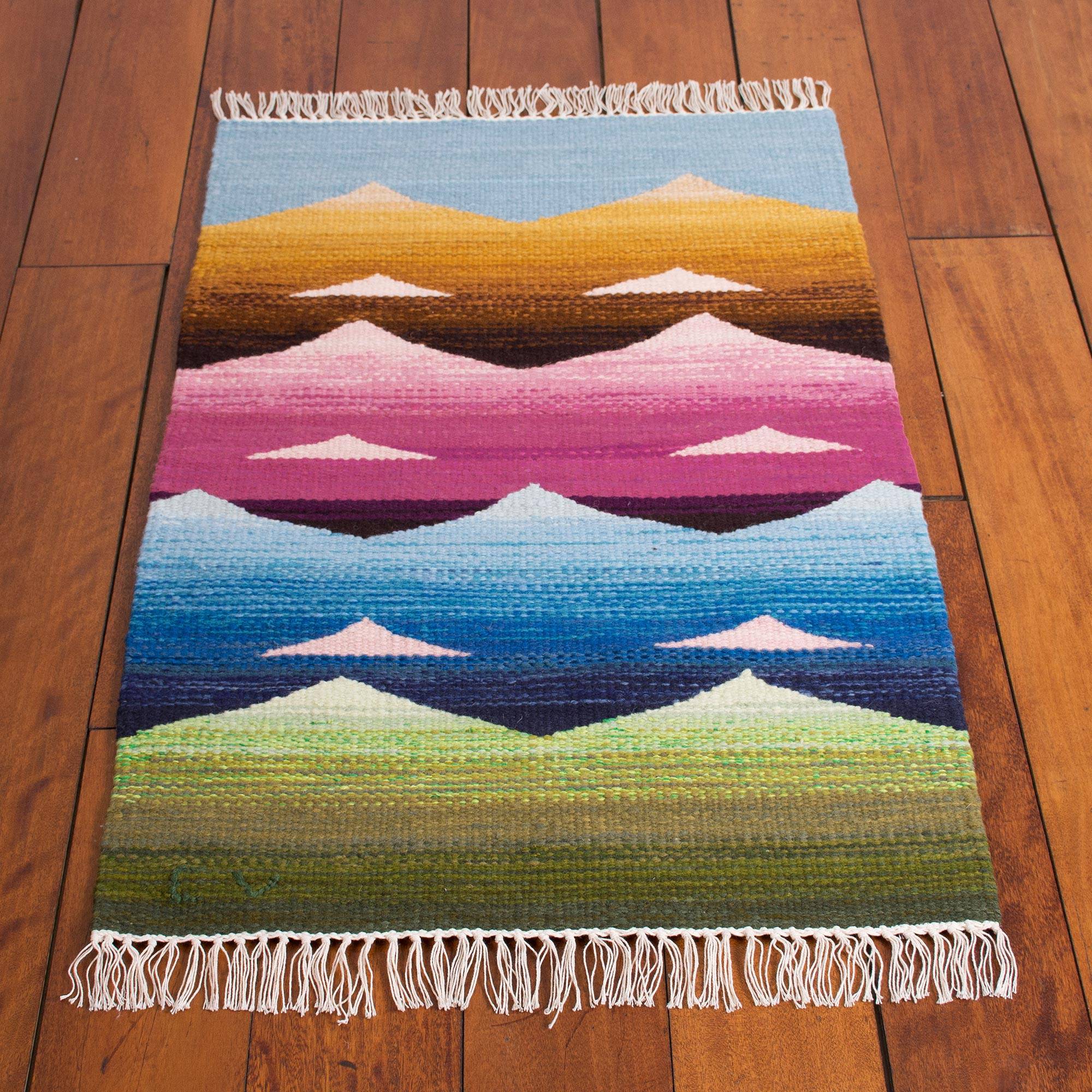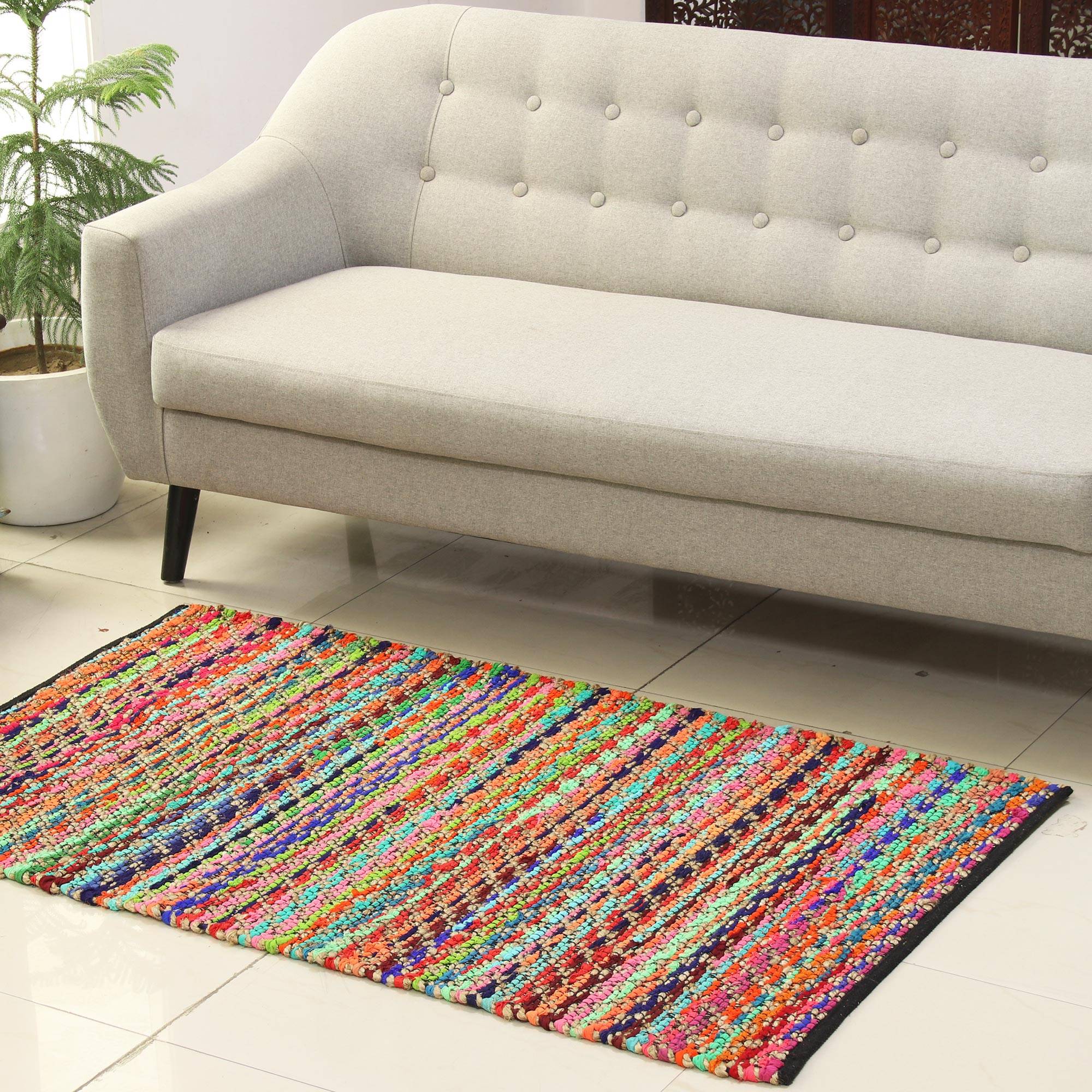
An area rug can change the dynamic of an entire room. It can add depth, dimension, and a sense of authenticity to a living space. Rugs provide warmth and comfort. They mute unwanted sounds. Plus, they are simply beautiful works of art that create style and flair. NOVICA’s large selection of area rugs are crafted from artisans all over the globe, and we invite you to explore the vast selection of styles, colors, and materials that make up this dynamic collection. Below, we’ve answered your most pressing questions about handmade area rugs.
While area rugs are handcrafted by artisans from all over the world, they share certain features in spite of their vastly different regions. From the Andes to Central America, Mexico to India, most artisans use some combination of sheep wool, cotton, and natural and industrial dyes. Some artisans, like those from India, may incorporate other materials, like jute, or recycled cotton, polyester, and rayon, into their works. Some of the Zapotec weavers in Mexico use dyes made from natural materials like walnut shell, cochineal, and flowers. With these materials, artisans create vibrant colors and authentic patterns, ideal for adding dimension and warmth to any home.
Traditional area rugs are mostly woven on looms. Treadle, or foot, looms make use of pedals to lift and lower the loom’s harness. This raises the threads of the warp so that the weft can pass through the opening in the threads. This type of loom is common in the Andes, Central America, as well as Mexico, and traces back to Mayan weavers in the period after the Spanish arrived. Elsewhere, such as India, handlooms are still used. The designs are mapped out in advance, and it takes about four to five days to complete a dhurrie, or traditional Indian floor covering. While the work to craft each of these rugs may be labor-intensive, the beauty of the finished product makes it well worth the wait.
Handmade, or foot made! Many of the weavers who produce area rugs use a pedal, or foot, loom. While they technically have the assistance of a machine–a treadle or handloom–its operation requires the dexterity, strength, coordination, and patience of the artisan. Additionally, most area rugs are finished by hand.
They say variety is the spice of life. For every personal preference, there is an ideal area rug to match. Whether you’re drawn to the geometric patterns and natural dyes of Zapotec rugs done in traditional Oaxacan style, or gorgeous dhurrie rugs from India woven from jute fibers, the elegant sisal rugs from Jaipur, or soft alpaca wool from the Andes, there is an area rug that is perfect for you.
Most area rugs are easy to maintain with a few simple steps. For small stains and spills, you can spot clean with warm, soapy water. Never rub the affected area, always blot! You should vacuum your rugs to remove dirt and debris. And to ensure that rugs wear evenly, it is recommended to place a pad beneath them, and rotate them regularly. As with most vibrant works of art, direct sunlight may dull the colors. For more substantive cleaning, it is recommended that you dry clean your area rug.
We’re huge fans of eco-friendly everything! When it comes to area rugs, you can look for certain indicators that it is produced in a sustainable way that reduces our carbon footprint. Some artisans, like a handful of weavers from India, use recycled fabrics: cotton, rayon, and polyester. Others stress the use of natural dyes and ethically-sourced wool. (Wool is particularly celebrated for being recyclable, abundant, and naturally stain-resistant.)
Area rugs are a design-friendly way to absorb sound and insulate a room. They are a wonderful way to reduce noise, as footsteps on a rug are more muted than on hardwood floors or tile, and they also dull ambient sounds. Additionally, they provide warmth and a general sense of well-being. Who doesn’t love a good area rug!
Rug pads are great because they prevent slippage, prolong wear, protect the floor underneath, and provide additional comfort and quiet. That being said, most of our rugs do not actually require a pad underneath. Many, like those from the Andes, crafted with sheep wool and cotton, are durable and sturdy enough to be placed directly on the floor. But for enhanced protection and longevity, a rug pad is always a welcome addition.




